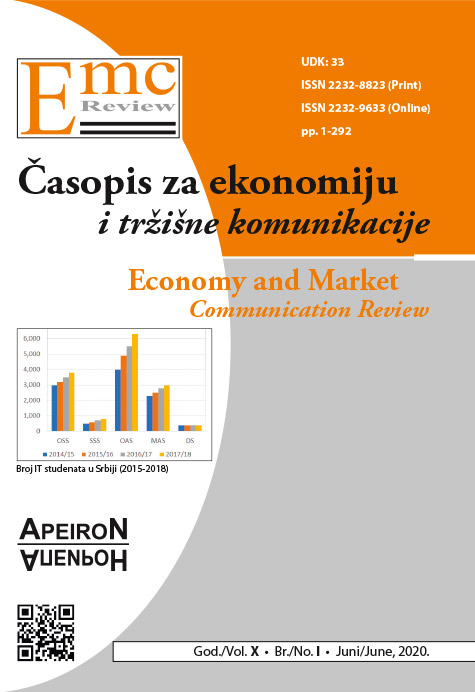Clusters in the Function of Strenghtening the Competitiveness of Agricultural Sector – A Review of the Southern and Eastern Serbia Region
DOI:
https://doi.org/10.7251/EMC2001250MAbstract
The current scope and structure of agricultural production, its high extensiveness, oscillation, low productivity, and inefficient organization of production and traffic flows are factors that limit domestic producers and exporters in reaching the competitiveness on the international market of alimentary products. With the aim of faster and more active inclusion of domestic agricultural products in the world trends of marketing and contemporary agrarian technologies, the accent of the research of this paper was the choice of optimal competitive procedures in the market, through clusters. Clusters represent a form of regional inter-organizational connectedness of enterprises from connected businesses with a unique interest to promote the competitive position of organization within the cluster, branches of economy and appropriate national economies through exchange of experiences and knowledge, sharing resources and joining of research-scientific and other supporting activities (Porter). However, even though clusters have an undisputed importance in strengthening of competitiveness, innovativeness and export of agricultural sector, when it comes to the agriculture in Serbia, and especially in the region of Sothern and Eastern Serbia, a major problem for their development is a rural ambience, characterized by the lack of favorable assumptions for their development. That is why in practice the condition is far from desirable. Numerous practical, institutional and normative problems, doubts and questions are present, which need to be resolved on the move in order for the agricultural clusters to achieve expected effects. The concept of clusters is being wrongly interpreted, so that, instead of being an important strategic lever of promoting the competitiveness, the cluster is being used and misused as a cover for various interests of individuals, local community, even state institutions. The competitive advantage of economy (and agriculture within it), regional development, as well as cluster development, cannot be achieved on their own. They must be directed and mutually supportive processes. Moreover, the government of Serbia with their working bodies must assume a much more operative role in providing adequate institutional environment for clusters, by creating supportive policies, social and legal basis which create a favorable climate for this kind of inter-organizational relationships. Also, with the aim of promoting rural development and networking in the agriculture of the region, the state must be much more pronounced in the certain phases of agricultural cluster development; apart from coordinating, control mechanisms must also be established, in order for one good concept not to be misused and compromised in practice, which is something cluster agents point out to. The state can achieve this through projects that are specifically targeted at agricultural clusters. This must be done on all levels of state structure, from the level of republic to region and local communities. Especially local communities should have more understanding for the processes of association in their respective regions, as the examples from more developed economies show that the successful clusterization of economy is best achieved with a “bottom up” approach.
